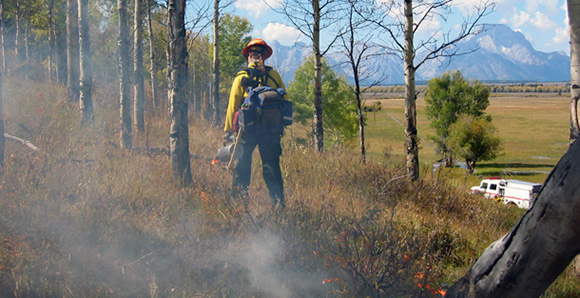This article is part of the Fire Basics for Kids series.
Fire as a Natural Resources Management Technique

People have long recognized fire’s dual nature, a fact reflected in many stories. A classic example is the Greek myth of the phoenix, a bird that lived for hundreds of years. At the end of its life the phoenix burst into flames and then was born anew from its own ashes.
As the phoenix used fire to renew itself, land managers sometimes purposely light fires to renew certain natural and historical environments. These are prescribed fires. Similar to the way that a doctor may write a prescription for medication to help a person feel better, resource managers study places and develop prescriptions, or burn plans. Prescribed fires transform habitats to support or protect native species. They can also help re-create historic landscapes that were burned regularly by people or naturally in the past, but have not been burned in recent decades. An example is burning a historic battlefield to keep the vegetation in the state present when the battle occurred. A prescription also tells the conditions under which a fire will be ignited by trained professionals.
Watch and Learn
Another way that resource managers use fire is by closely monitoring a naturally started fire, one ignited by lightning or lava, and monitoring how it burns to meet specific resource objectives, such as allowing fire in wooded areas where trees whose cones need fire to open.
All fires, prescribed and wildland, have risks and are potentially dangerous. Protecting human life is always the first priority and burn plans always look at the best ways to keep people safe.
Part of a series of articles titled Fire Basics for Kids.
Previous: Wildland Fire: Junior Ranger Program
Next: Wildland Fire Quiz
Last updated: January 4, 2017
